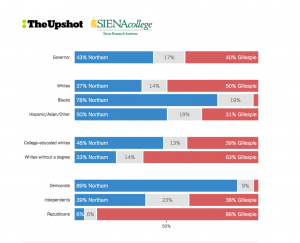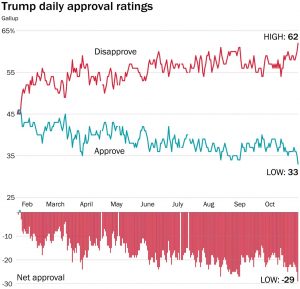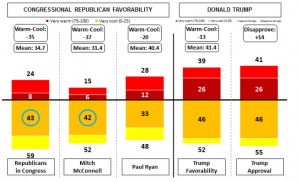The following article by Ruy Teixeira, author of The Optimistic Leftist and other works of political analysis, is cross-posted from his blog:
To understand what the 2017 exit polls are telling us in Virginia, it is first necessary to understand what they got wrong in 2016. Estimates we have done for our Voter Trends in 2016 project indicate that Virginia’s voters in 2016 were 38 percent white noncollege and 32 percent white college. White noncollege voters supported Trump by 67-27 and white college voters supported Clinton 51-42.
Compare this to the 2016 exits in Virginia. The exits claimed that Virginia voters were 38 percent white college and just 29 percent white noncollege. They pegged the white noncollege vote at 71-24 Trump but actually had Clinton losing the white college vote 45-49.
So, 2016 exit polls in VA practically reversed the correct proportions of white college and noncollege voters. In 2016, there were still more white noncollege than white college voters. Also, the 2016 exits overestimated the white noncollege Republican advantage and didn’t catch that white college voters likely supported Clinton by a solid margin in the state.
OK, now to 2017. The 2017 Virginia exits claim that white college educated voters vastly outnumbered white noncollege voters by 41-26. They further claim that Northam carried the white college vote by a narrow 51-48 margin, while losing white noncollege voters by 26-72.
Extrapolating from the 2016 comparison above between exits and our data, I’d say better estimates for VA in 2017 are as follows:
- White noncollege and white college were likely close to equal as shares of voters (perhaps around 35 percent each), not heavily weighted toward white college as the exit polls claim.
- The white noncollege margin for Gillespie was likely closer to 40 points than 46 points.
- Impressively and significantly, white college graduates, judging from the shifts in the exits between the two years and using our 2016 figures as a baseline, may have given Northam a mid-teens advantage not the narrow 3 point margin shown in the 2017 exits. That could be quite important going forward.
- As for black voters, I am OK with the 2017 exits’ estimate on margin (around 75 points) since our estimates and the exits agree on this data point for 2016. Possibly black voter share is a bit overestimated by the 2017 exits, judging from previous patterns. I suspect, however, that the slight decline in black voter share relative to 2016 registered by the exits is probably real.






